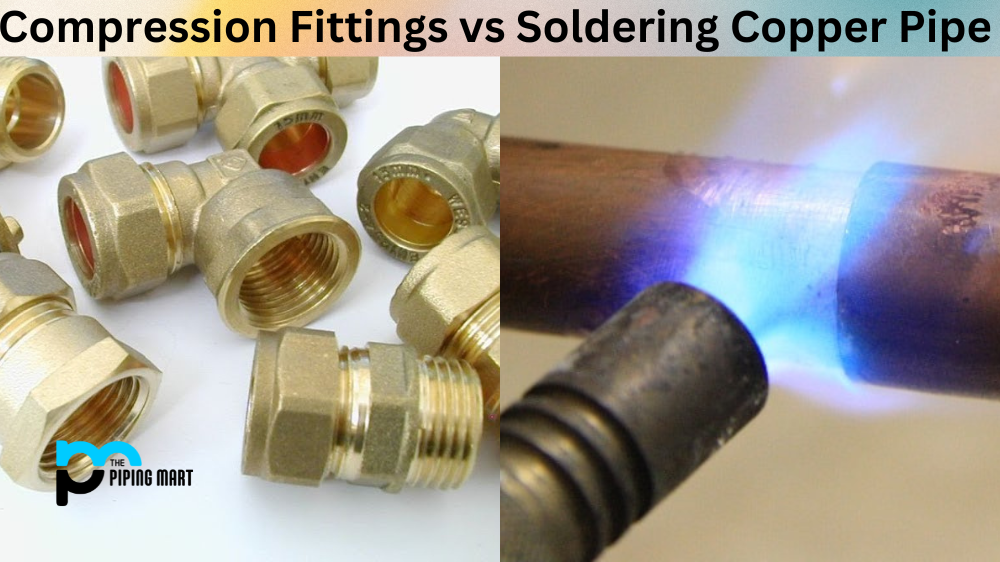Copper pipes are commonly used in plumbing systems and require a reliable connection to different fixtures and pipes. Two popular methods for joining copper pipes are compression fittings and soldering. Both have advantages and disadvantages, and choosing the right one depends on various factors such as budget, skill level, and type of project. In this blog post, you will learn the differences between compression fittings and soldering copper pipes, their pros and cons, and how to decide which is best for your plumbing needs.
Difference Between Compression Fittings and Soldering Copper Pipe
What is Compression Fittings?
Compression fittings are mechanical connectors that create a tight seal by compressing a rubber or plastic ring (called a ferrule) onto the copper pipe. They are easy to install and do not require any special tools or skills. Compression fittings can be used on both rigid and flexible copper pipes, and they come in different sizes and shapes to fit different types of connections.
Advantages
- Easy to install and remove
- No need for heat or flame
- Useful for temporary plumbing repairs
- Suitable for tight spaces and hard-to-reach areas
- It can be used on different pipe materials
- Cheaper than soldering tools and equipment
Disadvantages
- Not as strong as soldering connections
- High risk of leaks if not installed correctly
- Limited temperature and pressure range
- Requires periodic tightening to maintain the seal
- It may not be code-approved for some plumbing applications
What is Soldering Copper Pipe?
Soldering (also called brazing) involves heating the copper pipe and the fitting with a torch and melting a metal alloy (solder) into the joint to create a permanent bond. Soldering requires some experience and knowledge of proper techniques and safety precautions. Soldered connections are commonly used in high-pressure and high-temperature applications such as water heaters and gas lines.
Advantages
- Stronger and more durable than compression fittings
- Can withstand higher temperatures and pressures
- It provides a smooth and leak-free connection
- Suitable for permanent plumbing installations
- Code-approved for most plumbing applications
- Requires less periodic maintenance than compression fittings
Disadvantages
- Requires special tools and equipment (e.g. torch, flux, solder)
- More time-consuming and complex than compression fitting installation
- High risk of damage to surrounding materials if not done correctly
- Higher cost than compression fittings
Deciding Which One to Choose
The choice between compression fittings and soldering copper pipes depends on several factors, including your budget, skill level, plumbing needs, and desired level of durability. Compression fittings may be better if you have a small plumbing repair job requiring a temporary or flexible connection or limited plumbing experience. However, soldering may be necessary if you install a new plumbing system or replace a major component that needs a permanent and high-pressure connection. Following local building codes and regulations is important when choosing a plumbing method.
Conclusion
Compression fittings and soldering are viable options for connecting copper pipes to plumbing systems. Each method has advantages and disadvantages, and it is up to the plumber, homeowner, or contractor to choose the right one for their specific needs. Whether you opt for compression fittings or soldering, take all necessary safety precautions, follow proper techniques, and consult with plumbing experts. Using the right method and following best practices, you can ensure a reliable and long-lasting plumbing system that meets your needs and exceeds your expectations.
Meet Heer, a dynamic and driven writer learning tricks of her trade in the metal industry. With a background in Digital Marketing, Heer brings a unique perspective to her writing, sharing valuable insights. Apart from blogging she like reading and hiking.




